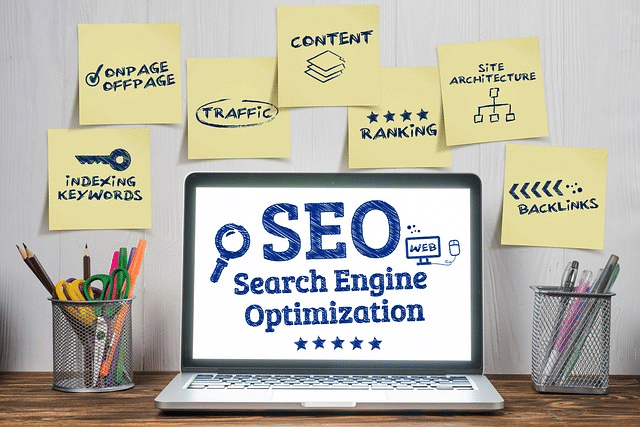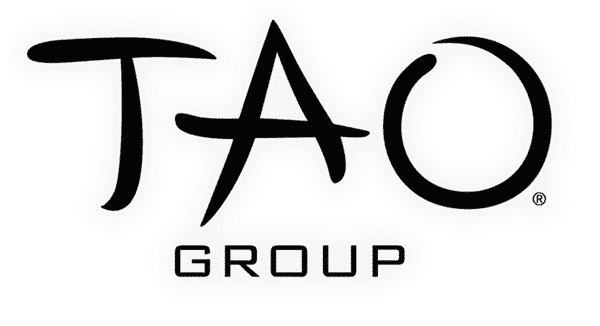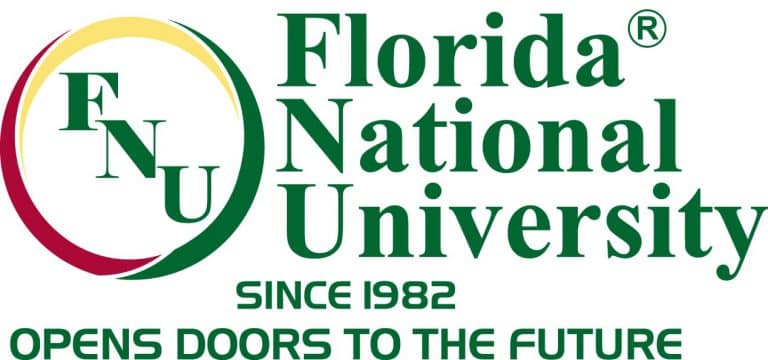In today’s rapidly evolving digital landscape, staying ahead of the curve in SEO trends is crucial for businesses to remain competitive. “SEO in 2023: Top 5 Trends You Can’t Ignore” is constantly changing, and neglecting to adapt can lead to a decline in search rankings, website traffic, and ultimately, sales. So, what does the future hold for SEO in 2023? In this blog post, we’ll explore the top 5 trends you can’t ignore, providing insights and strategies to help you stay on top of your game.
From AI-generated content to voice search optimization, local SEO, and an emphasis on E-E-A-T (Expertise, Authority, Trust, and Experience), these trends are shaping the future of SEO. Whether you’re an experienced marketer or just starting your journey into digital marketing, understanding these trends is essential for ensuring your business remains visible and relevant in the ever-changing world of search engine optimization.
Key Takeaways
AI-generated content has potential to improve SEO, but must be supervised by humans.
Voice and Mobile Search Optimization is key for competitiveness in the market.
E-E-A-T criteria are essential for evaluating content quality and improving search engine rankings.
AI and Content Generation

Artificial intelligence (AI) has revolutionized the SEO landscape, providing users with greater efficiency and scalability in content generation, making it one of the top SEO trends in 2023. Balancing the use of AI-generated content while maintaining human supervision for SEO fundamentals is vital as we progress towards a future with more automated search engine optimization tasks.
One of the main advantages of AI-generated content is its potential to enhance search engine rankings, featured snippets, and increase visibility. However, with these benefits come challenges and considerations. Google’s content update provides helpful guidance in creating content that meets user satisfaction, but it’s vital to ensure human supervision and adherence to SEO fundamentals when considering AI-generated content.
Adhering to best practices is a must to fully utilize AI’s potential in content generation. This includes:
Utilizing content optimization tools to analyze content and provide suggestions on keywords, common phrases, subtopics, and frequently asked questions
Optimizing content for featured snippets
Optimizing images for search engines
Customizing content to human readers
Creating content that is high-quality, accurate, and of value to users
Benefits of AI-generated content
Employing AI-generated content can expedite content creation, ensure precision, and furnish valuable insights, including insights from keyword research. As AI technology advances, we’re seeing tools such as Apple Final Cut, Descript, and Google Trends assist in the creation of high-quality video content and identifying popular topics. ChatGPT, for instance, exemplifies the progression of technology in content creation standards.
Ensuring precise and ethically compliant content is critical, as it affects its position on the search engine results page (SERP). Striking the right balance between AI-generated content and human input is key to ensuring your content remains accurate, relevant, and engaging for your audience.
Challenges and considerations
Maintaining content quality, avoiding over-reliance on AI, and adhering to Google’s guidelines are potential challenges associated with leveraging AI-generated content. As voice search optimization becomes more prominent, businesses must guarantee their content is optimized for voice search queries and easily discoverable by users.
Additionally, Core Web Vitals and user experience are increasingly important factors in SEO, with businesses needing to optimize page loading times, reduce page size, and guarantee a seamless user experience. Local SEO and hyperlocal targeting are also essential for businesses to ensure their content is optimized for local search queries and accessible to local users.
Best practices for AI-generated content
In order to maximize the benefits of AI-generated content, it’s beneficial to use AI tools like ChatGPT, prioritize user intent, and optimize content for search engine visibility. ChatGPT, for example, seeks to provide users with more efficient and accurate answers without the need to browse through multiple pages.
Given that images account for 62.6% of all Google searches and Google recognizes the importance of visual results to a user’s experience, it’s vital to make your images SEO-friendly. To optimize your images for a better Google search performance, consider reducing file sizes, using descriptive file names and alt tags, and ensuring proper placement within the content.
Lastly, focusing on natural language understanding and natural language processing can help you create content that is more engaging and relevant to your audience. By understanding the nuances of language and incorporating a conversational tone, you can improve the quality of your content, making it more appealing to both users and search engines.
Voice and Mobile Search Optimization

With the rise of voice assistants and the ubiquity of mobile devices, voice and mobile search optimization have become crucial for SEO success. As voice search becomes increasingly popular, it’s essential for businesses to adapt their SEO strategies to ensure their content is featured in voice search results. By 2024, it is estimated that there will be 8.4 billion units of digital voice assistants, emphasizing the importance of voice search optimization in the coming years.
Similarly, mobile-first indexing has become a key factor in search engine algorithms, giving priority to mobile-friendly web pages in search results. As an increasing number of users rely on their mobile devices for online search, businesses must optimize their websites for both desktop and mobile users to remain competitive in the market.
We’ll examine the significant aspects of voice search optimization and the consequences of mobile-first indexing in this section, providing insights and strategies to keep you at the forefront of the constantly evolving SEO landscape.
Key elements of voice search optimization
Voice search optimization is all about understanding how users phrase their queries and adapting your content accordingly. Essential components of voice search optimization include optimizing content for conversational queries, utilizing long-tail keywords, and guaranteeing mobile-friendliness.
Long-tail keywords are phrases that are longer in length and more specific, making them more likely to be used in voice searches. By focusing on natural language, user intent, and using long-tail keywords, you can create content that is more likely to be featured in voice search results, ensuring your website remains visible and relevant in the age of voice search.
Mobile-first indexing and its implications
Mobile-first indexing is a search engine algorithm that gives priority to mobile-friendly websites in search results. This approach is designed to ensure that websites are optimized for mobile devices and prioritize the mobile user experience. Consequently, businesses need to optimize their sites for both desktop and mobile users to maintain their market competitiveness.
Optimizing your website for mobile devices includes ensuring the content, design, and functionality of the site are tailored for mobile users. Additionally, it’s crucial to guarantee that your website is fast and secure, as these factors play a significant role in ranking with mobile-first indexing.
By addressing these trends you can’t ignore, you can ensure your website remains visible and accessible to the growing number of mobile users.
Core Web Vitals and User Experience

Core Web Vitals and user experience are increasingly important for SEO, as Google prioritizes fast-loading, high-performing websites in search rankings. With the increasing usage of mobile devices for searching, Core Web Vitals will be of paramount importance for businesses in 2023.
We will explore the importance of Core Web Vitals and strategies for enhancing your website’s user experience in this section. Core Web Vitals refer to three metrics that measure website performance in terms of loading speed, interactivity, and visual stability. To remain competitive in the SEO landscape, businesses must optimize these factors to provide a seamless and enjoyable experience for their users, ultimately leading to higher search engine rankings.
Understanding Core Web Vitals and putting strategies into action to enhance user experience will help keep your website relevant and visible in the dynamic world of SEO.
Understanding Core Web Vitals
Core Web Vitals are a set of metrics employed by search engines to evaluate the quality of a website, measuring factors such as loading speed, interactivity, and visual stability. These metrics are essential for businesses to understand, as they have a significant impact on search engine rankings and user experience.
The primary Core Web Vitals are Largest Contentful Paint (LCP), First Input Delay (FID), and Cumulative Layout Shift (CLS). By focusing on these metrics, businesses can optimize their websites for better performance, ultimately leading to improved search rankings and a more enjoyable user experience.
Strategies for improving user experience
Improving user experience is essential for businesses looking to remain competitive in the SEO landscape. Optimizing page load times is a critical factor in this regard, as slow-loading pages can lead to higher bounce rates and lower conversions. To optimize page load times, consider reducing the size of images, minifying HTML, CSS, and JavaScript, and utilizing browser caching.
Enhancing site navigation is another crucial aspect of improving user experience. Here are some strategies to consider.
Implement a clear and intuitive navigation structure.
Incorporate breadcrumbs to help users easily navigate back to previous pages.
Provide search functionality to allow users to quickly find specific information.
By implementing these strategies, you can help users easily find the information they’re looking for, leading to higher engagement and lower bounce rates.
Lastly, providing high-quality, relevant content is key to ensuring a positive user experience. By creating content that is useful, informative, and engaging, and optimizing it for search engines, businesses can ensure their website remains visible and relevant in the ever-changing world of SEO.
Local SEO and Hyperlocal Targeting

Local SEO and hyperlocal targeting are essential for businesses looking to compete in their local markets and attract customers searching for nearby products and services. By optimizing websites and listings for local keywords, businesses can increase their visibility in local search results and better connect with their target audience.
In this segment, we’re going to discuss the importance of local SEO and hyperlocal targeting strategies that can propel businesses to success in their local markets.
Importance of local SEO

Local SEO is an essential aspect of search engine optimization, enabling businesses to:
Target local customers
Elevate their presence in local search results
Optimize websites and listings for local, long-tail keywords
Incorporate photos
Solicit reviews
Ensure mobile-friendly content
By implementing these strategies, businesses can effectively target their local audience and boost their search rankings.
A strong local SEO strategy can help businesses grow their customer base, increase brand awareness, and ultimately drive more revenue. By focusing on local SEO, businesses can better serve their local communities and stand out in an increasingly competitive market.
Hyperlocal targeting strategies
Hyperlocal targeting involves tailoring marketing efforts to a specific geographic region, allowing businesses to reach customers within a particular area more effectively. Strategies for hyperlocal targeting include utilizing geolocation data, developing location-specific content, and capitalizing on local partnerships and events.
Geolocation data can help businesses in the following ways:
Generate more pertinent and customized content for customers in a specific region
Understand the needs and preferences of local customers
Create content that is more relevant to their target audience
Leverage local partnerships and events to expand their reach and build trust within their local communities.
Emphasis on E-E-A-T (Expertise, Authority, Trust, and Experience)

E-E-A-T (Expertise, Authority, Trust, and Experience) is a crucial framework for evaluating content quality and improving search rankings. As search engines continue to prioritize high-quality content that provides value to users, understanding and implementing E-E-A-T principles is essential for businesses looking to remain competitive in the SEO landscape.
We will investigate the E-E-A-T framework and strategies to enhance E-E-A-T in your content in this segment.
Understanding E-E-A-T
E-E-A-T stands for Expertise, Authority, Trust, and Experience, and is a set of criteria employed by search engines to evaluate the quality of content on a website. These factors help search engines assess the reliability and credibility of content, ensuring that users are provided with accurate, high-quality information that is not harmful or misleading.
The addition of “Experience” to the E-E-A-T framework highlights the importance of the author or creator’s direct experience with the topic of the main content. This new signal helps search engines determine the overall quality of the content, ultimately impacting its rankings and visibility in search results.
Strategies for improving E-E-A-T
Improving E-E-A-T in your content involves:
Showcasing author credentials
Building a strong online reputation
Providing accurate and up-to-date information
Enhancing user experience
By effectively highlighting author credentials, such as linking to the author’s social media accounts, personal website, and their own experience and research, you can establish credibility and trust with your audience.
Developing a strong online reputation can be achieved by focusing on topic clusters. This involves identifying the topics to be focused on, researching related terms and phrases, and creating content for each cluster. Additionally, targeting multiple keywords simultaneously can help to increase online authority. This includes creating content around a certain topic, linking internally to other related pages, and cross-linking between clusters.
Lastly, ensuring the accuracy and timeliness of information is crucial for building trust and authority with your audience. By conducting thorough research and staying up-to-date with industry trends, you can provide content that is both accurate and relevant, ultimately improving your E-E-A-T and boosting your search rankings.
Summary
In conclusion, the SEO landscape is constantly evolving, and staying ahead of the latest trends is essential for businesses to remain competitive. By understanding and implementing the latest SEO trends, including AI-generated content, voice and mobile search optimization, Core Web Vitals, local SEO, and the E-E-A-T framework, businesses can ensure their websites remain visible, relevant, and engaging for their target audience.
As we move into 2023, it’s crucial for businesses to adapt their SEO strategies and embrace new technologies and best practices. By doing so, they can not only stay ahead of the competition, but also provide valuable, high-quality content that meets the needs of their users and ultimately drives growth and success.
Frequently Asked Questions
What are the important SEO trends in 2023?
2023 is the year to prioritize user behavior and search intent when creating content, while page speed and performance are also key elements for improving keyword rankings.
All these elements will help businesses stay ahead of the curve in 2023.
What is the best SEO strategy for 2023?
To maximize SEO performance in 2023, prioritize keywords, create high-quality content, optimize page titles and descriptions, images, URLs, internal links, and website load time, and build quality backlinks.




































